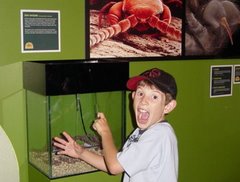Connection Generation is the first book written by Iggy Pintado. Connection Generation is a study of how connectedness affects our place in society and business and the challenges and opportunities this compelling development presents. As the Amazon Editorial Review says:
"We're all connected at some level. Whether you're a student, teacher, business owner, corporate professional, entrepreneur, manager, executive, or someone who is interested in how connectedness is changing our world, Iggy Pintado's Connection Generation is a must-read. A recognised leader in global connection technology and dedicated observer of societal and business patterns, Iggy believes that by understanding the attitudes and behaviours of individuals and groups, we can better manage the powerful link between communication and connection technologies to determine our individual and collective future. With nearly every facet of civilisation linked together, it is imperative that we understand how we connect into society and how this impacts on our capacity to adapt and grow. Consumer or leader, this book answers the vital question everyone is asking: Am I prepared for the lightning-fast connectivity changes taking place in the world?"
When talking with Iggy sometime ago we definitely shared views about how take up of social networking/connecting via Web 2.0 tools is not a factor of age, but of outlook. It is imperative in organisations, in particular, that we stop making excuses about how we cannot implement Web 2.0 thinking and actually do something about it. We have discussed some of these ideas on Nina Simon's Museum 2.0 blog: A simple argument for why museums and cultural institutions should care about social media.
Good luck with the book Iggy, and the Tweetblitz that is happening today. I'll be watching with interest.



